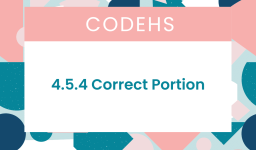The most common answer is:
my_tuple = (0, 1, 2, “hi”, 4, 5)
Your code here…
string_tuple = (3,)
my_tuple = my_tuple[:3] + string_tuple + my_tuple[4:]
print(my_tuple)This code aims to modify a tuple my_tuple by replacing an element at a specific index (in this case, the 4th element, which is "hi") with another value (in this case, 3). However, tuples in Python are immutable, meaning they cannot be changed once created.
This approach to reassign my_tuple by creating a new tuple that includes elements from the original tuple around the replaced value is correct.
There seems to be a slight misunderstanding in the naming of string_tuple. Since you intend to insert the integer 3, the name string_tuple might be misleading—it’s actually a tuple containing an integer.
Here’s the corrected version of the code, with a more accurate variable name:
my_tuple = (0, 1, 2, "hi", 4, 5)
# Correct variable name to reflect its content
integer_tuple = (3,)
my_tuple = my_tuple[:3] + integer_tuple + my_tuple[4:]
print(my_tuple)
By slicing my_tuple around the index of the element to be replaced and concatenating the slices with integer_tuple, you effectively create a new tuple with the desired modification.



